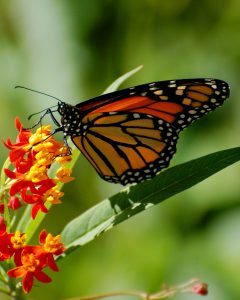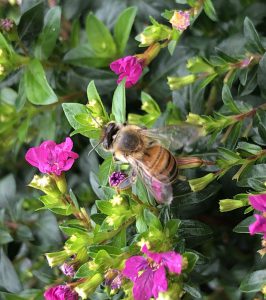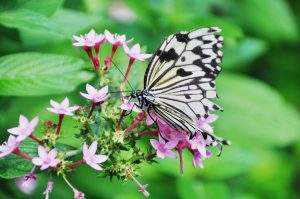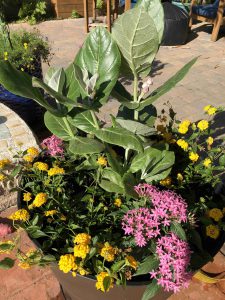
The birds are using your trees as landing strips readying their turn to land on the bird feeder. The butterflies are in abundance dancing in the air approaching their favorite flower and the bees take their turn from bloom to bloom deciding which one they enjoy most. Looks like paradise as you sit in your backyard watching your garden come to life. But how do you manifest this paradise?
Why pollinators are important
Bees are the most significant pollinators around the world. Wherever we have flowering plants, you will find a diverse and abundant amount of bees visiting. Bees gather pollen while different pollinators visit blossoms to gather nectar or as a spot to lay eggs.

Butterflies help pollinate a broad variety of flowers. They comprise a significant element of the food web, supporting organisms that feed upon them in some life stage or another. They are good gauges of environmental health because they are easy to identify and survey. Butterflies are model organisms used to investigate many aspects of biological research. They have been observed for long periods of time and the resulting data has been beneficial for climate change research. The popularity and beauty of butterflies prompt environmental learning and bond us to the natural world.
How to attract bees and butterflies to your garden

Bees like dense floral displays. So think about planting in clusters and not scattering your plants throughout the yard. Just having large pots with dense floral display can be effective. Bees search for food at different times of the year. Different types of bees may prefer different types of flowers. So it’s good to have an assortment of flowering plants blooming at any time of the year, preferably having three blooming at any point in time. Those three should be unlike one another, with either a different shape, color or from a different plant family. Speaking of color, bees are attracted to the colors white, yellow, purple or blue as opposed to red, orange, pink or green. Many bees have short tongues, known as proboscis, which means they can’t access the nectar as well from long flower tubes. So plants with short flower tubes or flat flowers are best. Avoid planting pollen-less plants since bees need pollen and nectar.

Butterfly proboscis vary in size and length. Those with long proboscis can gain access to the nectar in long, tubular blossoms. Many smaller butterflies, on the other hand, necessitate smaller flowers. Butterflies are also visual creatures and are often lured by a broader range of colors. Be sure to include larval host plants when possible. A garden with only colorful nectar resources has crucial value but it overlooks all the resources butterflies need to complete their life cycle from egg to adult. Start with with flowering plants and observe which butterfly species actually frequent your landscape. Then, pick host plants for the butterfly species you actually know are found in your area.
The right plant

Here is a list of plants you might try for attracting bees and butterifles. This is not a complete list but a means to get you started: (host) Passion Flower, Firespike, Pentas , Dense Blazing Star, (host) Butterflyweed, (host) Black-Eyed Susan, Golden Dew Drop, Salvias, Saw Palmetto, Sabal Palm, Simpson’s Stopper, Lantana, Firebush, Coral Honeysuckle just to name a few.
Other resources include UF/IFAS Gardening Solutions – Butterfly Garden
For more information on gardening and landscapes click here
All Photos taken by Author
 2
2
